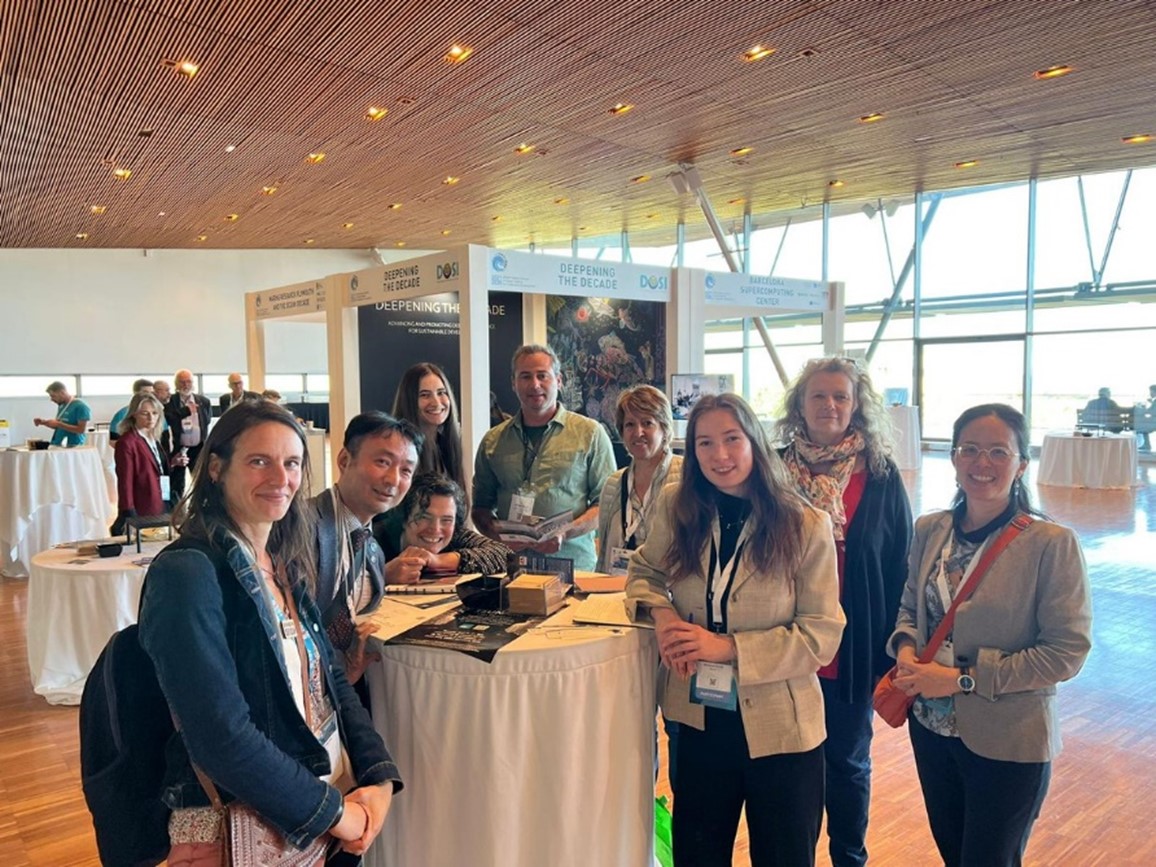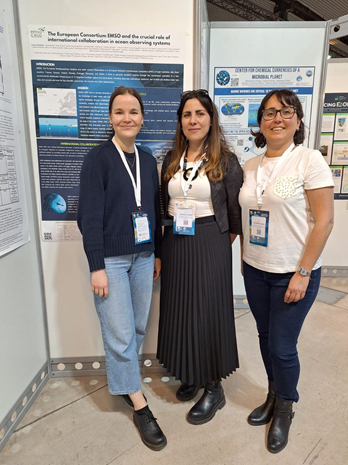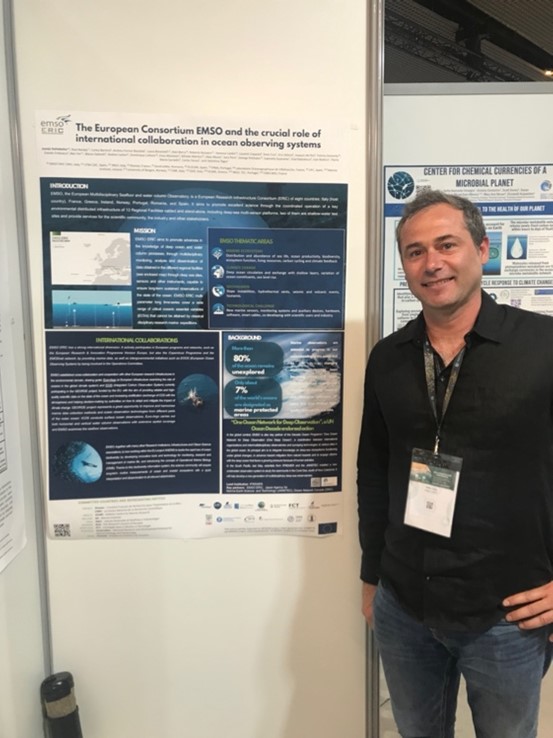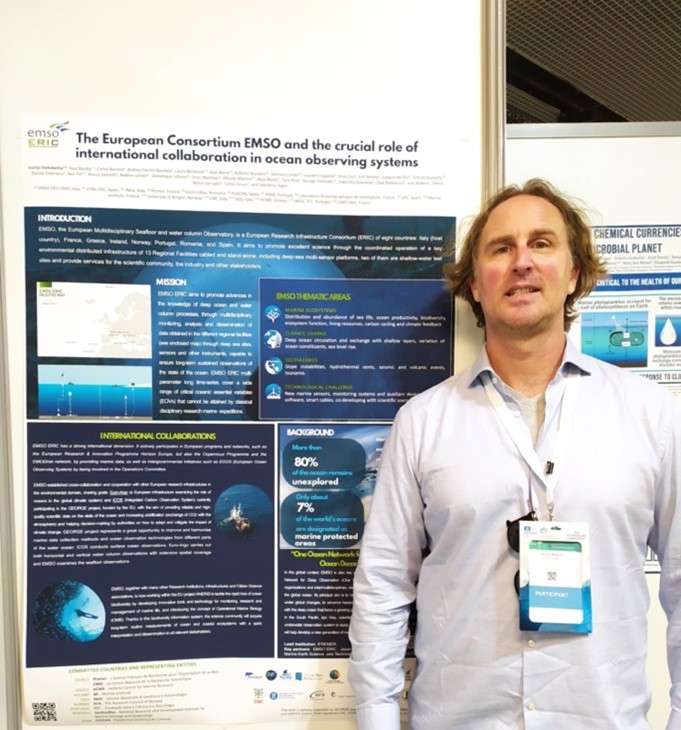A week full of inspiring exchangesor international collaborations and commitments to advance ocean sustainability and marine science took place during the UN Ocean Decade Conference in Barcelona from 8 to 12 April. During the past week, the EMSO team presented the ERIC mission, vision and goals with the poster “The European Consortium EMSO and the crucial role of international collaboration in ocean observing systems”, highlighting the Consortium’s scope in promoting advances in the knowledge of the deep ocean and water column processes, through multidisciplinary data obtained in its different Regional Facilities across Europe, capable of ensuring long-term sustained observations of the state of the ocean.
Among the international collaborations showcased, a focus was dedicated to two ambitious European projects in which EMSO is deeply involved, the GEORGE and ANERIS projects. Both projects reflect EMSO ERIC’s strategic vision to integrate various domains of oceanographic research and foster innovation by leveraging its broad network of observatories and test sites creating a more interconnected and collaborative European marine research landscape to better face the marine and environmental challenges.
Within the ANERIS project, EMSO aims to contribute to the global ambition to better understand and protect marine biodiversity through the development of advanced scientific instrumentation tools and methods for sensing marine life by the concept of Operational Marine Biology (OMB) as a comprehensive information system for monitoring and interpreting oceanic and coastal biodiversity through regular and sustained measurements, tracking the response to environmental changes. The objective of this system is to generate FAIR Operational Marine Biology data from a variety of different measurement systems, including underwater imaging, and leverage this data via a distributed IT infrastructure comprising of edge and cloud computing nodes that will be connected to the European Open Science Cloud (EOSC) . Two EMSO nodes, SmartBay and OBSEA, are working to ensure the uptake and implementation of the developed OMB technologies, in particular through the deployment of imaging flow cytometers to obtain in situ images.
In the GEORGE project, EMSO ERIC collaborates with two other European Research Infrastructures, Euro-Argo and ICOS, to develop new technologies and upgrade existing ones (such as the EGIM) with a suite of new sensors to monitor carbon cycle related variables from the surface to the deep ocean, offering high-quality scientific data critical to understanding ocean state changes, including acidification and the ocean’s role in CO2 exchange. Deeply involved in many tasks, EMSO is supporting the project by providing seafloor observation data that complements surface and water column observations by other partners and advances the technological challenges, leading the “Implementation and Demonstration” – Work Package that will implement and assess the progress of the different technologies and that will demonstrate the multi-RI concept in two large deployments.
Concerning the global context, EMSO team presented “One Ocean Network for Deep Observation”, a UN Ocean Decade endorsed action led by Ifremer with the collaboration of EMSO ERIC, Japan Agency for Marine-Earth Science and Technology (JAMSTEC) and Ocean Network Canada (ONC), aimed to integrate knowledge on deep-sea ecosystems functioning under global changes, to advance hazard mitigation from natural hazards and to engage citizens with the deep ocean that faces a growing pressure because of human activities.
“One Ocean Network for Deep Observation” was also showcased at the CCIB within the Deeping the Decade booth.
Read the poster here.





